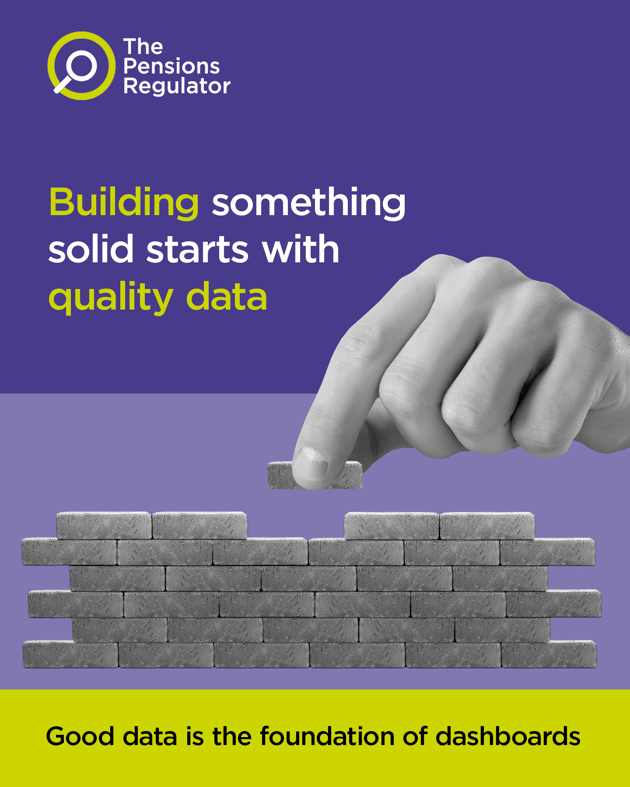Pension Dashboard: Why Accurate Data is Critical for UK Schemes to Avoid TPR Enforcement
UK pension schemes are currently facing a critical challenge: ensuring the accuracy and completeness of their data as the pension dashboard initiative approaches full implementation. This initiative, a government-led project, aims to provide individuals with a comprehensive view of all their pensions in one place. However, the success of this effort hinges on the ability of schemes to use accurate, up-to-date data, which has proven to be a fundamental issue. This is critical when matching members which multiple pension pots.
The Fundamental Problem: Inaccurate and Incomplete Data
One of the most pressing concerns surrounding the UK’s Pensions Dashboard is the poor quality of data held by many schemes. According to the Pensions Administration Standards Association (PASA), a large number of pension schemes are not actively managing their data, leading to inconsistencies and errors that could hinder the dashboard’s effectiveness. Many schemes still haven’t caught up and their data quality would not be accurate for the Dashboards switch-on resulting in missing pensions and partial matches. This will cause mass complaints and confusion for members when pensions are not visible.
The lack of standardization across the industry compounds this issue. Different schemes store data in varying formats, making it difficult to integrate information from multiple sources into a unified platform like the pensions dashboard. As former pensions minister Guy Oppermanpointed out, there has been slow progress in preparing data for the dashboards, with some schemes lagging behind in their efforts to clean up their records.
Data integrity issues not only risk undermining the credibility of the dashboard but also pose a significant risk to individual savers. Inaccurate data could lead to individuals receiving incorrect pension estimates, which could affect their retirement planning and financial security. There is also a risk of matching people to the wrong person which could result in serious regulatory issues.
The Role of The Pensions Regulator (TPR)
Recognizing the urgency of this issue, The Pensions Regulator (TPR) has taken a proactive approach to ensure schemes are meeting the necessary standards to participate in the pension dashboard project. In its latest blog, TPR emphasizes that schemes must act swiftly to address their data issues, warning that those that fail to do so could face enforcement action. TPR’s approach is focused on providing clear guidance to schemes, outlining the steps they need to take to get their data in order, and offering support where needed. However, the regulator has made it clear that there will be consequences for non-compliance, including fines and other penalties.
TPR’s enforcement strategy aims to create a level playing field by ensuring that all schemes, regardless of size, meet the minimum data standards required for the dashboard. This is particularly important given the wide range of schemes that exist in the UK, from large corporate schemes to smaller, independent ones. Without strict regulation, there is a risk that the dashboards could launch with incomplete or inaccurate data, undermining their usefulness and potentially harming consumers.
Steps to Avoid Enforcement
Schemes must take immediate action to avoid regulatory enforcement. TPR has set out a roadmap that includes conducting data audits, updating legacy systems, and ensuring that both common data (such as name, date of birth, and National Insurance number) and scheme-specific data are accurate and up to date. One of the key challenges identified is that many schemes have neglected their data maintenance over the years, meaning that significant work is required to bring records up to scratch.
Additionally, TPR has urged schemes to engage with data service providers to help manage the complexity of data integration for the dashboards. This involves not only cleaning up existing data but also ensuring that future data management practices are robust and can keep pace with the digital requirements of the pension dashboard.
Conclusion
The UK pension dashboard has the potential to revolutionize how individuals interact with their pension savings, but the success of this initiative depends heavily on the quality of the data provided by schemes. Incomplete, outdated, or inaccurate data remains a fundamental problem that needs immediate attention. The Pensions Regulator is playing a crucial role in holding schemes accountable and ensuring that they meet the required standards to participate in the dashboard. However, schemes must act quickly to audit and rectify their data, or they risk facing enforcement action, which could not only impact their operations but also erode trust in the broader pension system
Ensure your dashboard journey goes smoothly with the TPR’s checklist here.
Blackett, N. (2024). Act now on pensions dashboards so we don’t have to. [online] The Pensions Regulator Blog. Available at: https://blog.thepensionsregulator.gov.uk/2024/09/05/act-now-on-pensions-dashboards-so-we-dont-have-to/?_gl=1
Floyd, P. (2024). Data a ‘fundamental problem’ for dashboards: Opperman. [online] Pensions-expert.com. Available at: https://www.pensions-expert.com/Law-Regulation/Data-a-fundamental-problem-for-dashboards-Opperman
%20-%2010kb.png?width=100&height=85&name=MM%20-%20Logo%20Design%20(Blue)%20-%2010kb.png)


